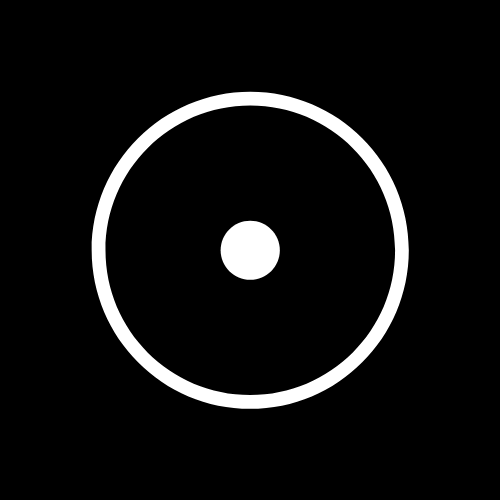Kabbalah is the ancient Judaic mystical tradition that provides insights into the essence of God, His interaction with the world, and the purpose of Creation. It is a spiritual doctrine that delves into the depths of the Creator, the world, and ourselves.
Kabbalah is the esoteric, mystical tradition within Judaism that seeks to understand the nature of God (*Ein Sof*), the structure of the universe, and the soul’s journey through divine realms.
Tree of Life
Fundamental to learning about Kabbalah is the study of the Tree of Life.
One of the things that attracted me to the study and practice of Kabbalah in my life are the many similar worldviews to Shamanism, Hinduism, and Taoism. -Richard
Kabbalah is often described as the inner Torah — a spiritual map hidden beneath the surface of Jewish texts and rituals.
The word *Kabbalah* means “receiving,” referring to the received tradition passed down from teacher to student. It’s not just a body of knowledge but a spiritual discipline aimed at transforming the self through deeper awareness of divine unity.
Kabbalah has evolved through the centuries, from secretive circles of sages to modern spiritual seekers.
Today, there are **several distinct schools of Jewish Kabbalah**, each with its own emphasis, lineage, and interpretive style. While the boundaries can blur, scholars and practitioners generally recognize these major streams.
Recommended Resources for Learning About Kabbalah
I have found that David Ghiyam, Arthur Kurzweil, and the Kabbalah Centre are excellent resources for learning about Kabbalah.
- Arthur Kurzweil’s book Kabbalah for Dummies is an excellent place to begin.
- David Ghiyam has online courses available at YourInfiniteSoul, does podcasts, and live events around the world. Many of his online courses are pay what you want. I recommend them.
- The Kabbalah Centre – teaches a modern, accessible form of Kabbalah that emphasizes universal spiritual principles rather than traditional religious boundaries. Their approach is rooted in the teachings of The Zohar, a foundational Kabbalistic text. Their aim is to help individuals remove chaos from their lives and connect with what they call the Lightforce of the Creator.
Schools of Kabbalah
So while there’s no fixed number, at least five to seven major schools are active today within or adjacent to Jewish tradition, each offering a unique lens on the mystical dimensions of Judaism.
- Theoretical Kabbalah
- Lurianic Kabbalah
- Ecstatic or Prophetic Kabbalah
- Practical Kabbalah
- Hasidic Kabbalah
- Academic and Neo-Kabbalah
- Christian and Hermetic Qabalah
1. Theoretical Kabbalah
Rooted in medieval Spain and Provence, this school focuses on metaphysical speculation about the divine realms, especially the *sefirot* (divine emanations). The *Zohar* is its foundational text.
2. Lurianic Kabbalah
Developed by Isaac Luria in 16th-century Safed, this school introduced powerful new concepts like *tzimtzum* (divine contraction), *shevirat ha-kelim* (shattering of the vessels), and *tikkun olam* (cosmic repair). It became the dominant form of Kabbalah in traditional Jewish circles.
3. Ecstatic or Prophetic Kabbalah
Associated with Abraham Abulafia, this school emphasizes meditative techniques, letter permutations, and mystical union with the divine. It’s more experiential and less theosophical.
4. Practical Kabbalah
Focused on using divine names, amulets, and rituals to influence the world. This school has always been controversial and is generally discouraged in mainstream Judaism due to concerns about misuse.
5. Hasidic Kabbalah
Emerging in the 18th century, Hasidism popularized Lurianic ideas and emphasized *devekut* (cleaving to God), joy, and the spiritual power of everyday actions. Each Hasidic dynasty (e.g., Chabad, Breslov) has its own mystical flavor.
6. Academic and Neo-Kabbalah
In the modern era, scholars like Gershom Scholem and Moshe Idel have studied Kabbalah historically and philosophically. Meanwhile, Jewish Renewal and Neo-Hasidic movements have adapted Kabbalistic ideas for contemporary spiritual seekers.
7. Christian and Hermetic Qabalah
Though not Jewish, these Christian and Hermetic Qabalah schools emerged in the Renaissance and continue today in Western esotericism. They reinterpret Kabbalah through Christian or occult lenses.
Foundational Texts
- Sefer Yetzirah (“Book of Formation”) – One of the earliest mystical texts, exploring creation through Hebrew letters and numbers.
- Sefer ha-Bahir (“Book of Brightness”) – Introduces symbolic language and the concept of the *sefirot* (divine emanations).
- The Zohar (“Book of Radiance”) – The central text of classical Kabbalah, attributed to Rabbi Shimon bar Yochai, though likely compiled by Moses de León in 13th-century Spain.
- Etz Chaim (“Tree of Life”) – The primary text of **Lurianic Kabbalah**, compiled by Rabbi Chaim Vital based on the teachings of Isaac Luria (the Ari).
Influential Teachers
- Rabbi Shimon bar Yochai – Legendary author of the *Zohar*, revered as a foundational mystic.
- Moses de León – Credited with compiling the *Zohar* and shaping medieval Kabbalah.
- Rabbi Moshe Cordovero (Ramak) – Systematized earlier Kabbalistic thought in *Pardes Rimonim*.
- Isaac Luria (the Ari) – Revolutionized Kabbalah with his cosmic theories of tzimtzum [“contraction”], shevirat ha-kelim [“the shattering of the vessels”], and tikkun [“repair” or “fixing”].
- Rabbi Chaim Vital – Luria’s chief disciple and transmitter of his teachings.
- The Baal Shem Tov – Founder of Hasidism, who brought Kabbalistic ideas into everyday Jewish life through joy, prayer, and *devekut* (cleaving to God).
My Points of Reference

Explore with Richard
- Welcome
- About Richard
- Reconnecting With Spirit.
- Richard's YouTube Channel
- Recordings by Richard
- Merch by Richard
- Intuitive Counselling Services
- Explore My Spiritual Paths.
- Explore My Teachers, Guides, and Mentors.
- Explore My Recommended Reading, Listening, Watching.
- Explore Self-Healing Tools & Techniques.
- Explore Intuition & Divination Systems.
- Explore Health Issues and Info.
- Explore My 365 Daily Inspiration.
- Explore Posts.
- Explore Pages.
"Be practical and expect miracles when you just take the first step forward every day." -Richard Edward Ward


